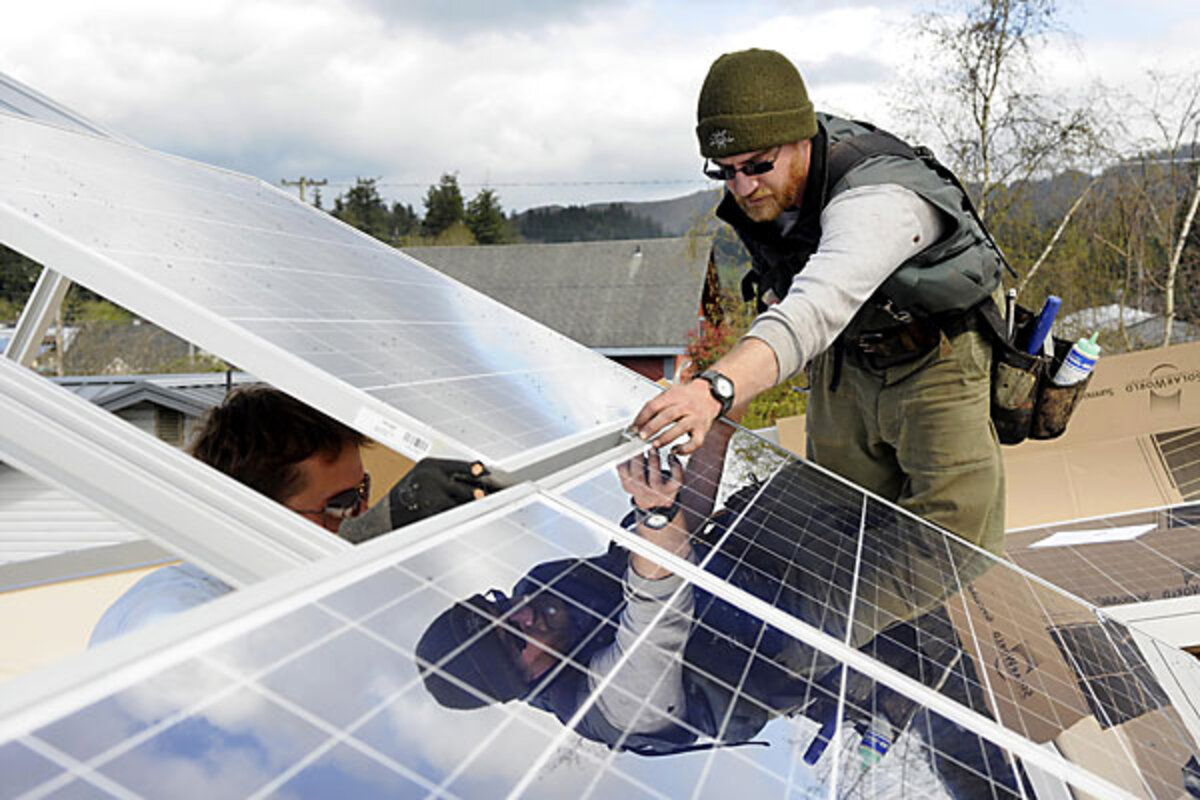Solar panels to go 3D
Loading...
By Trevor Curwin, Special to
With the solar energy industry booming, companies large and small continue to look for ways to squeeze efficiencies out of decades-old technology. So why not 3D technology?
Santa Barbara-based startup wants to harness concepts found elsewhere in high tech to increase the capture of more of the sun’s energy hitting solar panels and turning it into electricity.
“Our inspiration comes from fiber optics,” says Solar3D CEO Jim Nelson. “They manage the light to make it do what they want it to do, versus [flat] solar [panels] that just takes it as it comes.”
Though the first solar photovoltaic PV panels were installed in the U.S. in 1970s, the majority of systems installed today don't look that much different: flat-glass panels pointed at the best possible angle toward the sun.
That surface, however, means sunlight photons can pass through only once — and either hit an energy-generating cell or miss it, thus passing though unused.
Nelson says his firm’s technology uses 3D microcells that trap sunlight, allowing those photons to “bounce around” until they are all converted into electricity.
“We’re plugging the leak in [solar-panel] efficiency through absorption,” he says, “We believe our Solar3D cell can deliver an unprecedented level of cost and conversion efficiency.”
The firm’s idea has some admirers and potential customers.
“I find the concept intriguing,” says Bill Mazotti, solar technology business unit director for National Semiconductor, adding that the “tremendous pressures on costs” of solar energy make any potential increase in efficiency welcome.
Various industry estimates show that about a third of the sunlight is lost to reflection. Nelson claims Solar3D’s technology could collect nearly 100 percent of that sunlight and convert it to power.
But even with that potential level of efficiency, sector analysts point out that solar power innovation is happening on a lot of fronts, meaning any startup will face headwinds.
SEE ALSO: Top 10 most nuclear-dependent nations
Established solar technology firms like , Kyocera, and are also working to make solar PV systems more efficient — by tackling the panels themselves or by improving the non-energy producing “balance of system” components — and that makes life tough for single-idea firms like Solar3D, says Matt Feinstein, solar analyst at research firm Lux Research.
“First-mover advantage has already happened,” he says. “They’ve got the burden of proving themselves against the incumbents.”
Feinstein points out that while technologies like Nelson’s can be game changers, “disruptive technologies can be good but they go both ways.”
For example, while solar PV technology is still dominant in the industry currently, new “thin film” power generation technologies from firms like could be the true disruptive force, making any PV innovations, like Nelson’s, moot.
Good Year For Solar
The good news for startups is that the U.S. solar industry is coming off a great year.
According to a March 2011 report by trade group Solar Energy Industries Association and research firm GTM Research, the U.S. solar industry has continued to thrive despite overall economic conditions, with the industry’s market value jumping from $3.6 billion in 2009 to $6 billion in 2010.
While the report credits this 67 percent increase in part to federal and state funding initiatives and to the completion of several large utility-scale projects, it also cited the solar sector’s push to reduce technology costs as a big factor.
In some applications, installed PV system costs declined 8 to 11 percent.
“The U.S. PV market saw a breakthrough in 2010,” says Shayle Kann, managing director of solar for GTM Research. “It’s emerging as a global demand center for both suppliers and project developers.”
National Semiconductor’s Mazotti points out this increase in production scale will inevitably push all solar component pricing lower.
“For every doubling of volume, costs come down about 22 percent,” he says, but he adds that even that figure may not be enough for some in the industry.
“As much as [cost-cutting] hasn’t increased as much as some people expected, overall quality of the system has increased,” he says, ensuring better system reliability and life spans.
In addition to concepts like those of Solar3D, he agrees with Lux’s Feinstein that there are many ways to squeeze further efficiency out of solar PV technology.
He says his current focus has been on electronic systems that make each solar panel in a multi-panel array more reliable.
But he adds any improvement is still critical to keeping the industry’s momentum going and making solar-derived electricity cheaper.
“You don’t have to go far to see how the technology has expanded, and that will keep driving solar toward grid parity,” he says.
Solar power costs are estimated at 0.15/kwh, and as low as 0.10/kwh in the sunniest places, bringing it in line with the average cost of residential electricity of just under .10/kwh in the US.
While industrial and commercial electricity consumers pay less for their power, renewable energy unit predicts grid parity for solar power for all electricity consumers in the sunnier parts of the US by 2015.
Solar3D’s Nelson says it’s that grid parity goal that keeps him going, despite the challenges that Lux’s Feinstein points out.
“The old-timers have an air of desperation,” he says, referring to both the incumbents in the solar industry and elsewhere in the energy arena. “The only way we’re going to be competitive is if we innovate. The innovators are the ones who are going to win the future.”
“We want to change the world, and one of the ways to do that is to make solar economically viable,” he adds.





